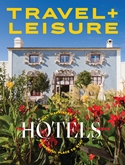
Zlatibor (meaning "Golden Pine") is a very popular mountain resort area in south-western Serbia. It is bounded on the north by Mount Tara, to the east by the Veliki Rzav River, to the south by the Uvac River and to the west by Bosnia and Herzegovina.
Warm and pleasant summers and not so cold winters. Zlatibor's air is very clean and healthy and going to Zlatibor is recommended for those who have tyroide gland-related and breathing issues.
Medium hills and a lot of fields. Highest peak is Tornik at 1496 meters (4908 feet), and other peaks are Brijac, Cigota, Vijogor, Konjoder, Liska, Gruda... Branesko polje (the Branesci Plain) is the biggest Zlatibor's plain.
Zlatibor has a lot of very pure and clean water. There are many smaller and bigger rivers, but there are no natural lakes. There are only a couple of artefact lakes. Zlatibor's waters have good infuence on human health because they contain some minerals.
Many animals inhabit Zlatibor's woods and pastures. More than 120 plant species can be found in Zlatibor's fields.
The first inhabitants of Zlatibor were the Illyrians. They left their small tombs all over Zlatibor. Romans conquered Zlatibor in 4th century BC and the Illyrians were romanized.
Slavs came in 7th century from what is today Poland.
From 1463 to 1804, Zlatibor was a part of the Ottoman Empire.
Beginning of tourism in Zlatibor dates from August 1893, when Aleksandar I Obrenović, king of Serbia, came to Kulaševac, as Kraljeve Vode were called back then. However, the real tourism started in 1905, when the king Petar I Karađorđević visited Kraljeve Vode.
In formal situations, Zlatiborians use the literary Serbian language. In unformal situations, however, languages that are used are the Traditional Zlatiborian, and the Neo-Zlatiborian.
The Traditional Zlatiborian is a dialect of the Serbian language. It is quite similar to the standard Serbian, but there are many differences. Knowing standard Serbian could be useful if you speak with a Zlatiborian villager, but not always. The Neo-Zlatiborian is a mixture of the Traditional Zlatiborian and the literary Serbian language.
English is not spoken in Zlatibor's rural areas, but in urban areas (in Kraljeve Vode and Cajetina) many people just know some words of it, or speak it well. However, entering a hotel or a restaurant where English isn't spoken could be quite possible.
When you come to Zlatibor, you will probably come to Kraljeve Vode. Kraljeve Vode is a small town, but it's very modern and urban (even more than Cajetina, the administrative centre of Zlatibor). It is connected with other Zlatibor's towns and villages. When speaking about Zlatibor, many people usually refer to Kraljeve Vode only.
The best way to get to Zlatibor is to get to Belgrade, the capital of Serbia, and then to look for a direct bus line to Zlatibor. Bus lines connect Zlatibor with all parts of Serbia, and Montenegro.
You can also come to Zlatibor by train from Belgrade and other bigger cities, but you'll end up in Semegnjevo, Susica, Sljivovica, or Jablanica, Zlatibor's villages. The main train station for Zlatibor, despite being called the Zlatibor Train Station (Zeleznicka stanica Zlatibor) is located in the village of Semegnjevo, 10 km away from Kraljeve Vode. Coming to Kraljeve Vode from there could be difficult, because there aren't a lot of people who speak English, so it would be better to leave the train in the neighboring city of Uzice, and then use a bus to come to Zlatibor.

No comments:
Post a Comment